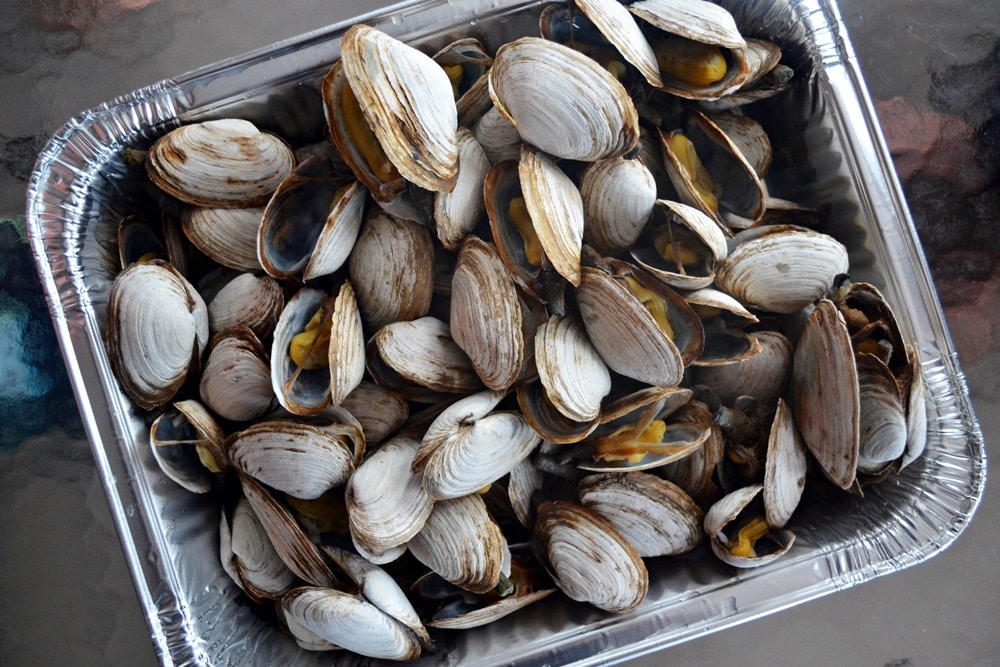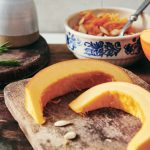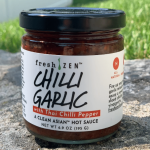Cooking Advice
New England Steamed Clams | Guide & Recipes
A heaping tray of steamed clams with bowls of broth and butter dipping is a sure sign of summer in New England. Here are some tips on how to cook steamers.

Coffee By Design | Portland, Maine
Photo Credit : Katherine Keenan







i grew up on the cape , and my uncle was a fisherman . and every summer we would hit the certain sandbars with our rakes and buckets / baskets . if we brought home more than what he wanted , he traded for other fish . most of the trading was for lobsters ( lubstas ) ,flounder , cod , striper ,squid , crabs or mussels . its kind of funny he use to catch all of the above also . we never went hungry in the summer . gramps was the chowda master , making clam , cod and seafood chowda
you forgot the clam cakes
Yes, I agree.. Sea Swirl in Mystic is great!!
Many an Essex clammer will tell you the soft-shell clams that live in the mud are the sweetest, while the clams in the sand have much less flavor.
My mother always put the steamers in a pot of water with pepper to soak. The clams eat the pepper and it cleans them out from the sand and grit. I would love to have some, but I live in Texas and they are not available here. Oh for the good old days.
Try the heavenly stuffed quahogs, Portuguese style!
You say to use white wine, wrong. To enjoy the melted butter, get rid of all the junk and just apple cider vinegar and enjoy. I grew up in Maine and my father was a lobster man from Frenchboro, Me. and we know how to enjoy seafood.
To each his/her own preference!
My Mom would soak them overnight in the sink with cornmeal on the bottom. They would eat the cornmeal and discard all the unwanted “stuff” in them.
Can you tell me where i can order steamers to be shipped to me in kentucky. I need to have some this summer. Steamers and fried whole clams are not available here. I miss them.
Almost any of the lobster shippers in Maine, at least Portland, also have “pissah” clams. They don’t like to ship them because the longnecks have thin shells and break very easily. You cannot cook and eat a dead clam. I’ve had them shipped to Illinois with the proviso that at least 50% of them might be broken and dead upon arrival and there would be no refund. If you’ll agree to their terms, go ahead and order. I’ve done it on numerous occasions. We summer in Maine, but sometimes I just gotta have steamers when in Illinois. The fact that they don’t ship well is the reason they are not available outside of New England. Order about 75-100% more than you think you need as anywhere from 25-50% of the clams will be lost in shipment. Also, absolutely ship overnight. If you love steamers, the cost is worth it. And you can turn your friends on to Maine steamers. They’ll love you.
Having dug in the mud flats they also seem more tender.
Clam Strips:
Soffron Brothers Clam Company in Ipswich, Mass., which once had an exclusive contract to provide clam strips to the Howard Johnson’s restaurant chain for its Tender-sweet Fried Clams.
One brother a digger couldn’t / wouldn’t eat the bellies but did the necks; however, the sea clams are tougher than shoe leather if not cut properly and cooked appropriately, hence had the contract with Howard Johnson for the exclusive offering on their menu. This was possible as I understand due to their registered automated cutting ability into strips which started in a small building and into a large building (Ipswich, MA) that was vacant after their being closed many years and now the home of Ipswich Ale.
The “Hot Dog Roll” was a Howard Johnson development for his “Tender-sweet Fried Clams” and then Lobster Roll. Could be toasted on two sides and lye flat to fill and serve.
Woodman’s of Essex has shipped for us and arrived ocean fresh.
Don’t forget to allow the clams to soak in water with corn meal and hot peppers for about 30 minutes to an hour, so the clams will spit out sand…..
Aahh, the Native clam. We say little necks, you say long neck. Also, you didn’t say how long to steam the beauties. Just long enough to get them to open, then out of the steam. The ones that don’t open are perfect for the gulls.
Our Dad claimed in Niantic harbor, near old Camp Dempsey…Remember(?). Always got his bushel plus; ate great in camp at Rocky Neck, 50s & 60s!
My Grandfather used to stuff live clams the night before their steam bath with a goodly serving of corn meal. Clean the steamers then layer them with their last supper of corn meal. Caution that you not give them too much to feed on as they will pig out and may be a bit too full and mushy when they hit your bowl. Also … try steaming them in cheap beer. The results and the broth are excellent!!!
don’t forget one bottle of beer of any kind to the water and steam them
Steamed or fried – something we have here that others just don’t. Can’t chose – both are great. I used to dig soft shells as a kid in East Boston – because, yes they were fine and the airport wasn’t more than a runway. We’d dig them and bring them home to cook just as you describe here. We also would go to Salem Willows and get mussles and quahogs. We have the best shellfish here in New England.
How do you get the neck skin of fresh steamers to prepare for frying?
In the’50’s and’60’s we dug steamers in Brewsters flats. We often were lucky and dug up a razor clam, they are sweeter than any other shellfish when eaten with a little sauce. The other clam we went after at super low tides were the “surf or sea” clams. The ones that are around 6” across. These make the “BEST” New England style chowder…bar none. Steam them, chop coarse and use the broth in the chowder using you recipe…it will be better than any chowder you have ever had!
You can have fresh seafood shipped from Maine! We live on Cape Cod and I still order from this company! https://www.mainelobsternow.com/?gclid=EAIaIQobChMIiJa4gfHx5wIVCZyzCh2a0wdWEAAYASAAEgIWNPD_BwE
You are correct, here in Nova Scotia we harvest bar clams to make rapure
Also extract the meat and cook them in the oven in the shell with bread crumbs cheese lemon juice maybe a little white wine
I love love my Steamers from Massachusetts. I miss them I live in FL and FL Clams are not the best if you ask me. But the Steamers New England (Massachusetts) style are the best they are #1 in my book aww I would love to have some Today if I could and Lubstas (Lobsters) yum with drawn butter and the delicious streamer broth wow that would make my day for sure. I also love Cod and Scrod (baby cod) so tender love it. Three of my favorite ???? seafood.
You can have the BEST seafood shipped overnight from Maine! (We live on Cape Cod). https://www.mainelobsternow.com/?gclid=EAIaIQobChMIiJa4gfHx5wIVCZyzCh2a0wdWEAAYASAAEgIWNPD_BwE
check your local W/D they can order them they are costly but good i am from ri do i know what you mean
You made my mouth water. I moved from RI 4 years ago after spending my whole life there.
Thanks for the above comments and stories, I can relate to all with fond memories.!
Steamers, to me, are the best tasting clam. You must make sure to remove the black skin off the leg of the clam. I love them with its broth and salted butter. They are also great chopped up and put in clam fritter with its broth. So good !!
YUM! Now I know what I will prepare this weekend—-steamers! (Also, and despite the fact I grew up on Cape Ann, MA, I’ve got a couple of new tips. You’re never too old to learn!). Patty
Grew up on Connecticut shoreline. Old yankees say put steamers . whenin pot with cold water, covered when fully steaming lift cover three times and they are done, never let me down. I now live in SW Florida and am able to get steamers from local fish market they come from NE. can,t get cherrystones,good local hard shell clams but small.
‘Large kettle of water’? I don’t think so unless you want to have boiled clams instead of steamed. Just an inch or less of water- you don’t want the broth diluted!
Ah, steamers and cherrystones. Dad would steam the cherrystones with garlic and butter. Once done he’d pour off the broth in a mug or a bowl. We would have a feast dipping the clams in broth and butter. And we didn’t have to peel any necks. I place cherrystones on a grill and when they open up I put dabs of homemade bbq sauce, some sweet some spicy hot.
We used one of those vintage Presto pressure cookers for our clam bakes. You’d throw the clams on the bottom with a little water, then you had all these baskets that you could layer all the way to the top-so it would be linguesa, breakfast sausage, cod, red potatoes & corn. Was wonderful. Now I’m in Florida & clams for steaming are hard to find. People don’t know what they’re missing.
Throw some beer into the water! This works for any shellfish including shrimp, steamers, lobstah etc. The beer should be browm or amber but an IPA works too. And you may find you don’t need butter after you dip the clam in the broth!
I forgot to mention the best place to get clam fritters is at Kate’s in Brewster Cape Cod. Their crab roll it wonderful too.
We always washed the bushel with water, then sprinkled corn meal over layers of the clams. Repeated over the day. Clams eat the corn meal and when steamed you get an added bonus.
Gosh…here in Arizona, it’s hard to get FRESH clams! Once in a while Costco will have them…but not often! SAD!
I live on the CT coast and love seafood. When we were much younger, one of my best friends introduced me to steamers. She and her husband lived on a tiny houseboat docked at the local marina. Many a weekend afternoon, you could find us all sitting on the floor of the houseboat, front door open, devouring steamers and throwing the shells overboard into the water, returning them back from whence they came! Such happy times…and I swear, eating them that way just made them taste that much better!!